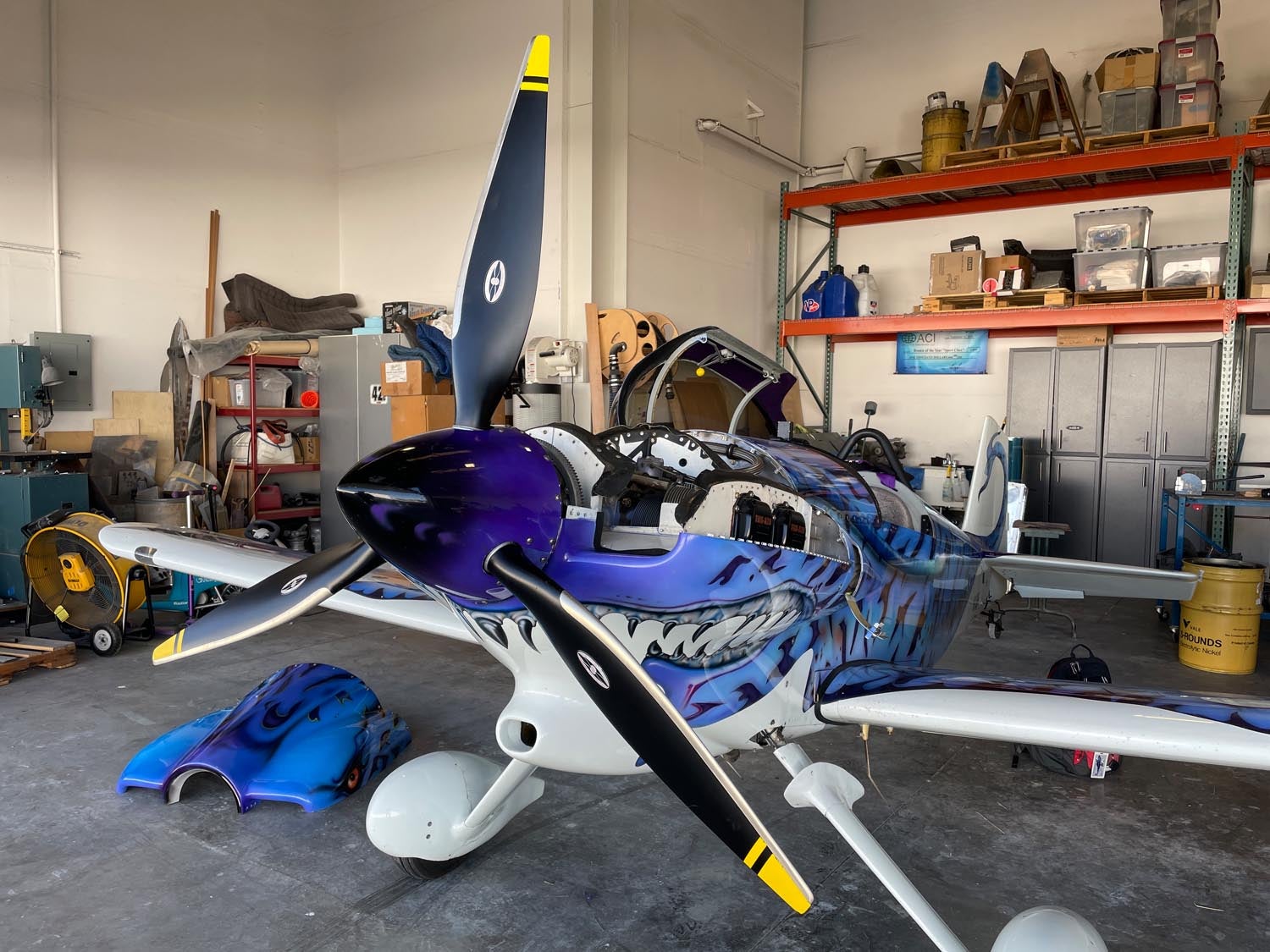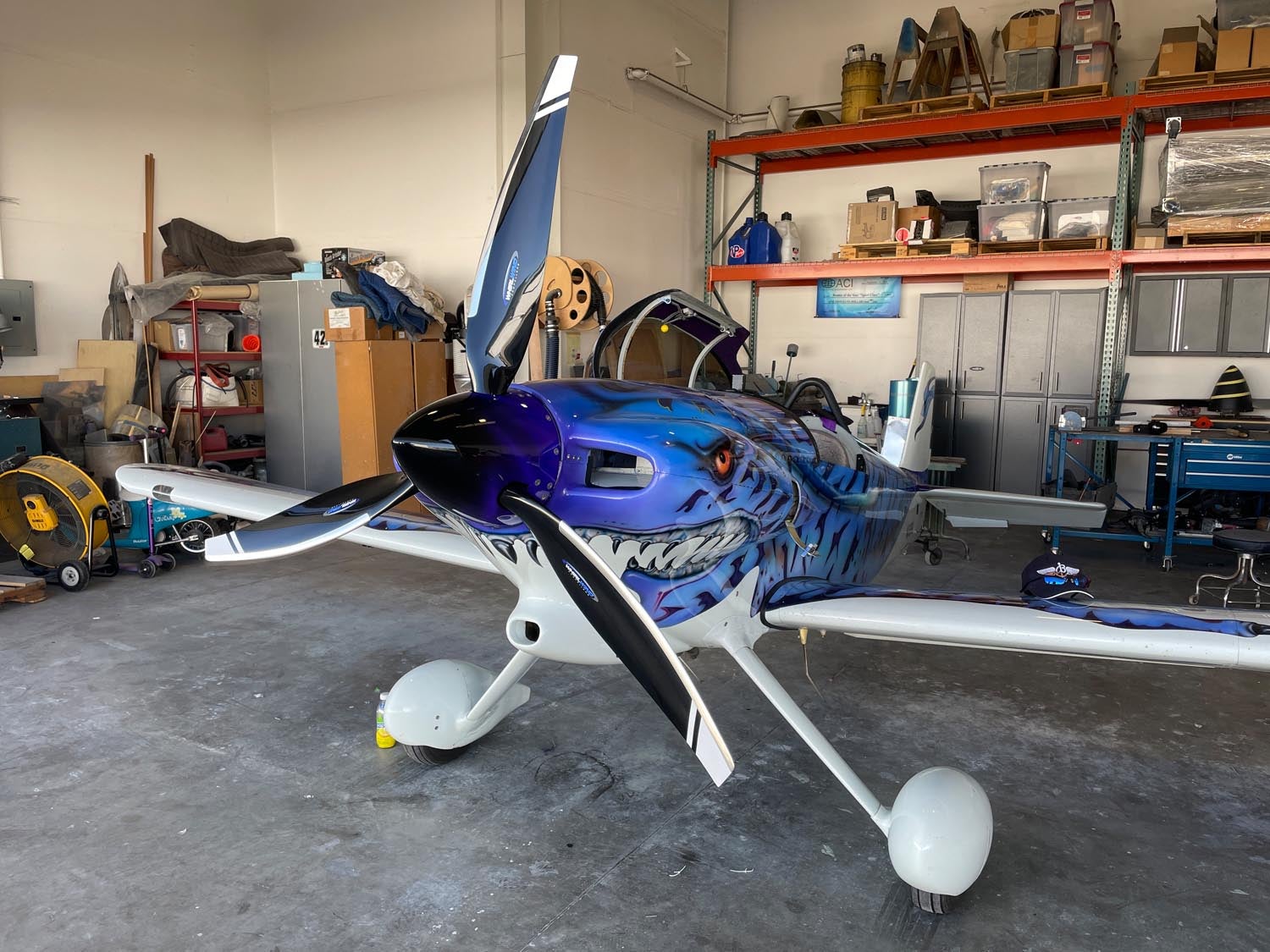
Our RV-3 (Tsamsiyu) has been flying since day one with a Whirlwind 151 three-blade prop (the one with the yellow tips). Fabulous propeller—light weight, constant speed, great aerodynamics—that gave us tremendous performance, both in cruise and climb. The airplane will climb 3000 fpm at sea level or run down the ocean beach flat out faster than the airframe was designed to go (if you let it). But nothing lasts forever.
The 151 was one of Jim Rust’s early designs and he has learned a lot in more than a decade, refining both aerodynamics and mechanics to the point where the 151 has been discontinued in favor of the newer 300 series (the one with the white tips). And since the 151 was discontinued, he doesn’t have any parts for routine servicing or overhaul. So it was only matter of time before it became an expensive paperweight. And since I’ve been very happy with the 300 on our RV-8 for a year, Jim made us a good deal on a new prop for the RV-3.

The swap was simple—we didn’t even need to take the spinners off! The old prop (with the yellow tips) was added to Jim’s collection, while the new prop (white tips and beautiful carbon fiber-weave blade faces) was carefully balanced and proved to be smooth as silk. Since the performance is more or less comparable and we were swapping constant speed for constant speed, we simply did a new weight & balance calculation and made a logbook entry—it’s not a significant enough change to warrant a new Phase I.
I flew the airplane (from our home base near Reno) down to El Cajon (just east of San Diego) one day last week in cold temperatures (and great tailwinds), arriving about 10:30 a.m. By 12:30, the airplane was ready to fly with the new nose! Kudos to Jim and his team, as well as to painter/artist extraordinaire John Stahr, who pre-painted the spinner to match the rest of the airplane before the prop was ready. I flew the airplane back to Big Bear Lake for the night and headed home the next morning getting some qualitative performance data—it felt faster and climbed better! The winter air in the lee of the Sierra was too rough to get good quantitative data but I took it up the next day and saw a speed increase of about 3-4 knots flat out and probably a 10% increase in climb. Given that the airplane’s redline is 183 KTAS, I guess that getting 181 (WOT, full RPM, leaned for best power) is probably good enough when it comes to speed.














I wonder how this new 3 blade compares to the 3 blade 400RV prop from Whirlwind I have on my Glasair 1RG with the earlier McCauley hub and 245 HP souped up Lyc angle valve IO360-C1-D6 engine.
May plane had the even earlier wood core prop prior to this.